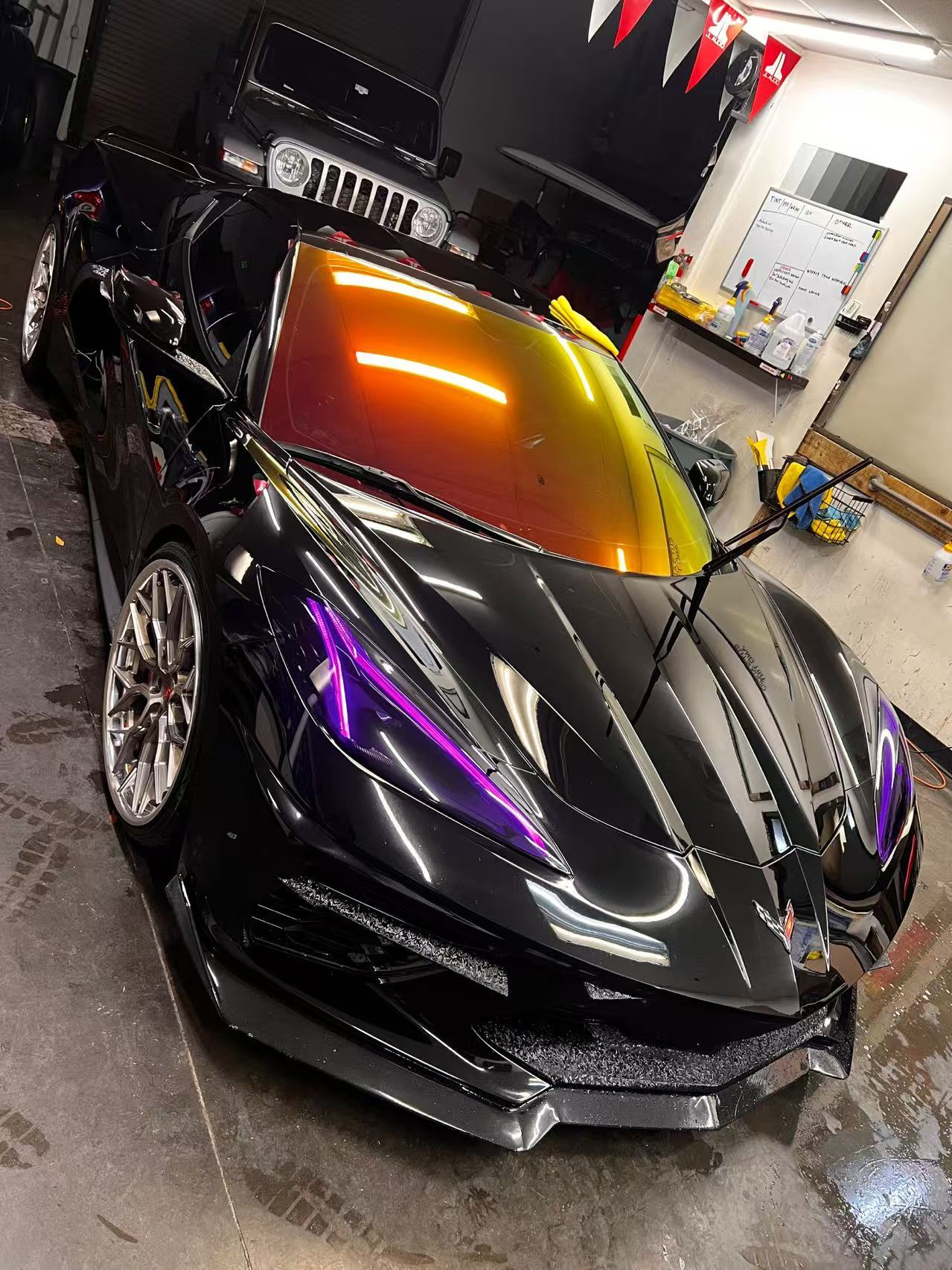Window tinting has become a popular choice for car owners and homeowners alike, offering privacy, UV protection, and an enhanced aesthetic appeal. This process involves applying a thin laminate film to the interior or exterior of glass surfaces, effectively reducing glare and heat. Understanding how window tint behaves after installation is crucial for achieving the desired results.
A common question that arises is: “Does tint lighten after installation?” The behavior of window tint post-installation can significantly impact your satisfaction with the product. Recognizing how factors like curing time and environmental conditions affect tint appearance helps in managing expectations and maintaining quality.
This article aims to provide comprehensive insights into window tint behavior after installation. By exploring topics such as the initial appearance of tints, the curing process, and long-term considerations, you will be better equipped to make informed decisions about window tinting solutions. Whether you are considering tinting for the first time or seeking to understand changes in existing tints, this guide will offer valuable information tailored to your needs.
For instance, if you’re looking for high-quality options that offer excellent performance, you might want to consider Nano Ceramic Film Series. These films are known for their durability and superior heat rejection properties.
Alternatively, if you’re interested in adding a unique style to your vehicle, Chameleon films could be an exciting choice. These films offer a stunning color shift effect that can enhance your automotive styling experience.
Understanding Window Tint Installation
Window tint installation is a careful process that involves several important steps to ensure a smooth finish.
The Installation Process
- Cleaning the Glass: The process starts with thoroughly cleaning the glass to remove any dust or debris that could affect the adhesive properties of the tint film.
- Applying a Solution: Once clean, a special solution is applied to both the glass and the film, allowing for easy repositioning and alignment.
- Cutting and Applying the Tint: The tint is then carefully cut to size and applied to the window.
- Smoothing Out the Tint: It’s meticulously smoothed out using squeegees to eliminate air bubbles and ensure a flawless fit.
Factors Affecting Installation Time
When considering how long it takes to tint a car, expect an average time ranging from 1 to 4 hours depending on various factors:
- Type of Vehicle: Larger vehicles like SUVs may require more time than standard sedans.
- Number of Windows: More windows mean longer installation times.
- Complexity of Windows: Uniquely shaped or heavily contoured windows might require additional effort.
- Experience of Installer: Skilled professionals can speed up the process without compromising quality.
Other Factors Influencing Duration
- Quality of Tools: High-quality tools, such as those used for applying IR nano ceramic films, can make installation faster.
- Environmental Conditions: Humidity and temperature can affect adhesive behavior.
- Installer Experience: Expert installers navigate challenges quickly, reducing delays.
Understanding these elements helps in appreciating the complexities involved in achieving optimal results from your window tinting experience.
Enhancing Your Window Tinting Experience
For instance, using high-quality nano ceramic films can significantly enhance the performance of your window tinting by providing exceptional heat rejection and UV protection.
If you are running a window tint shop consuming a large amount of window films, consider buying directly from a manufacturer. This can not only save costs but also help in distributing your window film brand to local tint or detailing shops, as discussed in this guide on private-label/OEM film packages.
For any inquiries or further assistance, feel free to contact KSB, a professional window film manufacturer and wholesaler known for high-quality products and expert guidance.
The Initial Appearance of Tint and Its Curing Process
When you first have window tint installed, it might look different from what you expected. Right after installation, the tint can appear hazy or cloudy because of moisture trapped between the film and the glass. This cloudiness is normal and shouldn’t be used to judge the final look.
Different types of tints can look different at first:
- Dyed Tints: These are usually darker initially because they use dye to block sunlight.
- Metalized Tints: These might seem more reflective at first due to their metallic particles.
- Ceramic Tints: These tend to be less reflective, offering a clearer view even during the drying period.
The curing process is key for getting your window tint to look and work as it should. During this time, the moisture under the film evaporates, allowing the adhesive to stick fully to the glass. This process is important in figuring out if tints get darker or lighter when they dry.
To keep your window tint in good shape during this time, it’s helpful to follow some care and maintenance tips. Proper care can help ensure long-lasting clarity and protection for your tint.
How long it takes for tints to dry can vary based on several things:
- Weather Conditions: Warmer weather and direct sunlight can speed up drying times, usually taking anywhere from a few days to a couple of weeks.
- Type of Tint Film: Some films might have ingredients that speed up curing, while others need more time.
A question often asked is, “Does tint get darker as it cures?” Interestingly, many people find that once fully cured, tints don’t really darken much but instead settle into their intended shade. On the other hand, some might think they darken slightly as any cloudiness goes away.
Knowing how your tint will change during its curing phase helps set realistic expectations for its final look. If you’re thinking about getting new window tints or need tools for your tinting projects, there are comprehensive resources available that offer high-quality window tint tools designed to enhance efficiency and precision in your tinting projects.
Does Tint Lighten After Installation?
Window tint can change after installation, especially in its shade. So, does tint get lighter after it’s installed? Several factors contribute to this:
1. Type of Film
Different types of window films respond uniquely post-installation. For instance, HP Carbon films might appear darker as they cure, while others like the Nano Ceramic films can lighten slightly. This change is usually due to the composition and quality of the film itself.
2. Installation Quality
The skill level and techniques used during installation can significantly impact the final appearance of the tint. A high-quality installation minimizes imperfections like air bubbles or wrinkles, which can alter how light interacts with the film.
3. Heat Generation and Curing Process
As window tint cures, heat plays a crucial role. The curing process often involves a gradual dissipation of moisture trapped between the film and the glass. During this time, tints may initially seem darker but can lighten as they dry completely.
4. Environmental Factors
Exposure to sunlight and varying temperatures can also affect how much a window tint lightens over time. Prolonged exposure to intense sunlight might lead to slight fading, depending on the tint’s UV protection level.
Understanding these elements helps in managing expectations about your window tint’s appearance after installation and ensures you choose a product that aligns with your aesthetic preferences and durability needs.
For example, if you live in a hot climate, opting for Nano Ceramic films which are engineered for superior heat rejection and UV protection could be beneficial.
On the other hand, if you’re looking for a film that provides premium-grade performance at an affordable price, Nano Carbon films might be the right choice.
Long-term Considerations for Window Tint
Sunlight exposure is a significant factor that can cause window tint to fade over time. Continuous exposure to UV rays can gradually break down the tint, leading to a lighter appearance than the original installation. This natural fading process underscores the importance of selecting tints with superior UV protection capabilities, ensuring durability and longevity.
Notably, poor application techniques also play a crucial role in affecting the tint’s appearance. Issues such as air bubbles or wrinkles may emerge if the film is not applied correctly. These imperfections not only detract from the aesthetic appeal but can also accelerate degradation. Air pockets might trap moisture or dust, leading to further discoloration and weakening of the adhesive bond.
Choosing high-quality films is essential for maintaining the tint’s integrity over time. For instance, premium Nano Ceramic films often come with enhanced features like scratch resistance and better adhesive properties, providing a more resilient barrier against environmental factors. These films are engineered for superior heat rejection, UV protection, and optical clarity, making them an excellent choice for long-term use.
Alternatively, high-performance carbon films offer affordable yet premium-grade performance with superior heat rejection and optical clarity. Such options are ideal for those seeking quality products at a lower price point.
It’s also worth considering advanced paint protection films which provide long-lasting defense against scratches and abrasions, further extending the lifespan of your window tint.
However, there’s a common misconception regarding the quality of Chinese window films. While some believe that these films are of inferior quality due to cost-cutting by suppliers, it’s essential to note that there are reputable manufacturers offering high-quality window films from China. This blog post delves deeper into this topic, providing valuable insights.
Investing in quality products and professional installation services can significantly extend the lifespan of your window tint, ensuring it remains effective and visually appealing for years. Understanding these long-term considerations helps you make informed decisions about your window tint investments, emphasizing both initial quality and proper maintenance practices.
Conclusion
To keep your window tints looking good and working well, you need to know what happens to them after they’re installed. Do tints get lighter after installation? The type of film and how well it’s installed are important factors in how tints might change over time.
For long-lasting results, it’s often best to:
- Choose high-quality films, like the ones from KSB, a top window film manufacturer in China known for its excellent nano ceramic window films.
- Make sure an expert applies the tint to avoid problems like air bubbles or wrinkles.
- By consulting professionals, you can ensure optimal results and extend the life of your window tints. Working with experts not only gives you peace of mind but also helps keep your vehicle’s tinting looking great and functioning properly.
FAQs (Frequently Asked Questions
Does tint lighten after installation?
Yes, window tint can lighten after installation due to various factors such as the type of film used, the quality of installation, and exposure to heat and sunlight over time.
How long does it take to tint a car?
The average time required for window tint installation can vary, but it typically takes between 2 to 4 hours. Factors influencing this duration include the size of the vehicle and the type of tint being applied.
Does tint get darker as it cures?
Window tint may appear to get darker as it cures, particularly during the drying process. This is due to moisture that can affect its initial appearance. However, once fully cured, some tints may not significantly change in darkness.
What factors affect how window tint lightens over time?
Several factors can influence how window tint lightens over time, including the type of film used, quality of application, exposure to UV rays, and heat generation. Poor application techniques can also lead to premature fading or discoloration.
What are the long-term considerations for maintaining window tint?
Long-term considerations include protecting window tint from excessive sunlight exposure which can cause fading. Additionally, ensuring proper application without air bubbles or wrinkles is crucial for maintaining its appearance and longevity.
Should I consult professionals for window tinting?
Yes, it is highly recommended to consult professionals for optimal results when installing window tints. Professional installers ensure high-quality application and can help you choose the best film for your needs.







